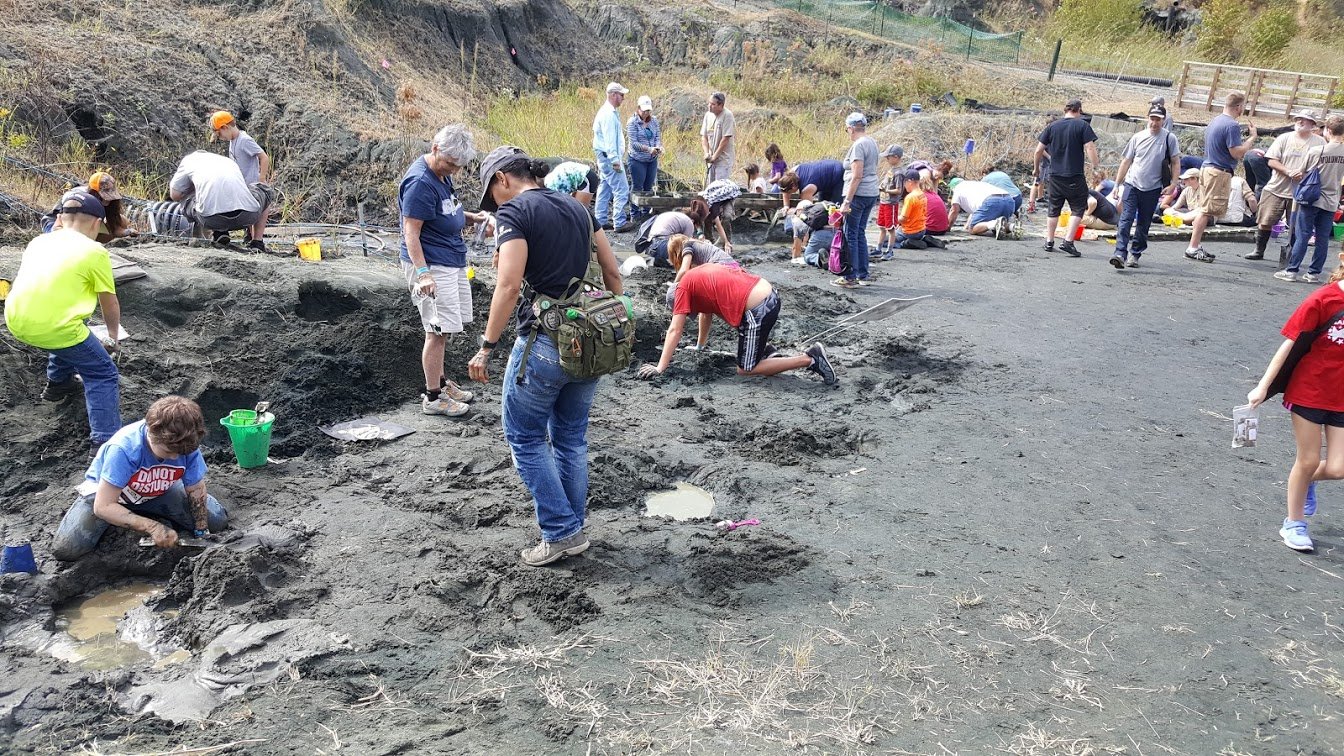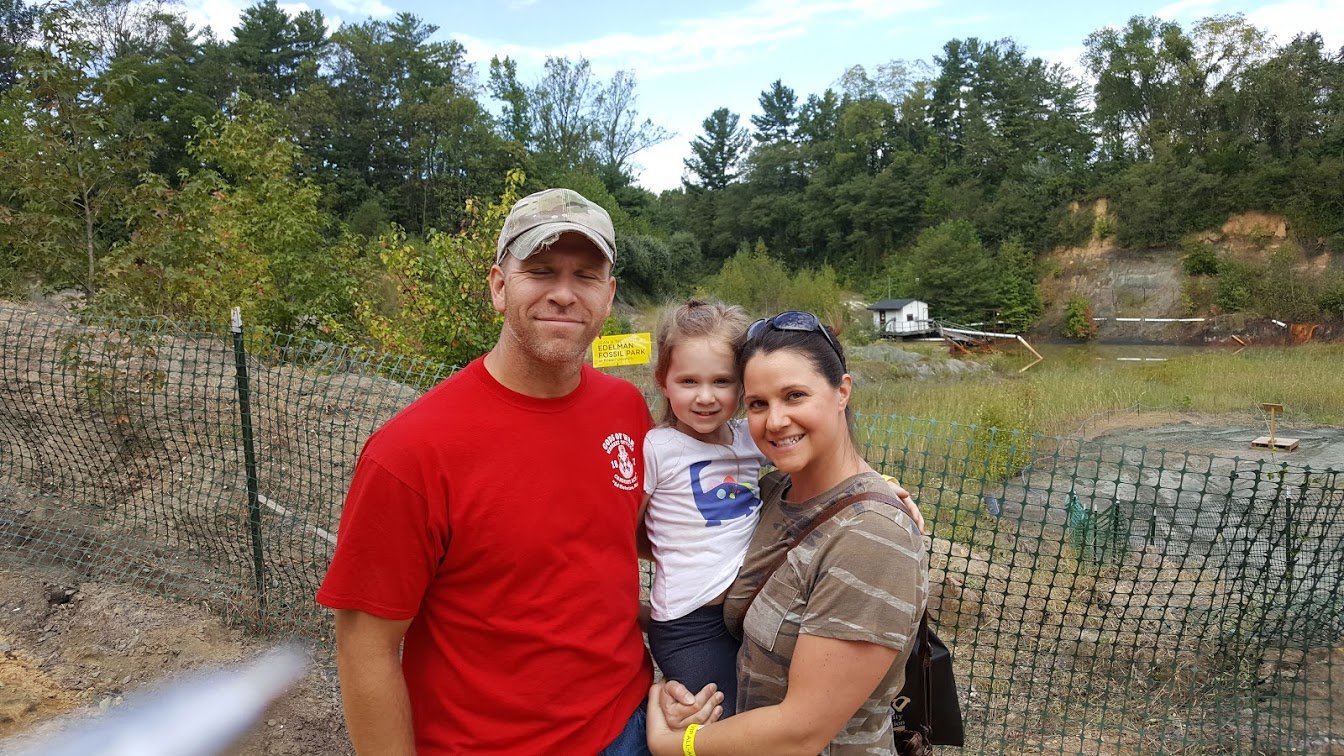Community Dig Day 2018 draws thousands of fossil hunters
Community Dig Day 2018 draws thousands of fossil hunters

The seventh annual Community Dig Day Sept. 22 drew some 2,000 fossil hunters, from newborns and toddlers to octogenarians, whose muddied hunt for prehistoric treasures unearthed a great variety of prizes including ancient shark teeth, squiggly, pasta-like snail shells, oyster shells and minerals.
The largest public event of the year at the Jean & Ric Edelman Fossil Park at Rowan University, Community Dig Day has become a tradition each September as fossil hunters, most of whom register online for a ticket lottery months in advance, plow headlong into the pit, a cratered section of the former Inversand Mining Company site in Mantua township.
Rowan bought the Inversand site in 2015 and, in 2016, it was endowed with a $25 million gift by alumni Jean and Ric Edelman, who envision development of the roughly 65-acre parcel as a unique outdoor laboratory for students, faculty and citizen scientists.
Fossil Park director and Founding Dean of Rowan’s School of Earth & Environment Dr. Kenneth Lacovara said the University this summer hired an architect to design an on-site museum and that a groundbreaking for the project is expected next summer.
He said visitors to the park are rightly excited when they hear about the new museum but always, to an individual, are most thrilled about the site’s really old attractions.
“It never fails,” said Lacovara. “They’ll find a 65-million year old shell or a shark’s tooth that they get to take home and it’s always a transformational experience.”
Lacovara, a world-renowned paleontologist who in 2005 discovered Dreadnoughtus schrani, one of the largest dinosaurs ever to walk the Earth, while excavating a site in Patagonia at the southern end of South America, said it’s especially exciting to see school age or even pre-school age children find their first fossil.
“They learn a few things, starting with the fact that where they live is directly connected to Earth’s past, and that thrills them,” Lacovara said. “They also learn that science is a process and many begin to see themselves as future scientists.”
Four-year-old Lilly Goeller of Woodstown (below with her parents) made such a find, though not the intact dinosaur skull she set out for.
“I found bacteria poop!” she said of some fossilized animal remains that are also common at the site.
Her parents, David and Christina, a 2006 alumna, said it was fun and educational all the same.
“It was a great experience for her,” David Goeller said. “I loved this stuff as a kid and she clearly does too.”

From hunting fossils to teaching about them
Observing and helping identify relics as the fossil hunters emerged from the pit, their hands, feet and knees coated with rich, black, prehistoric mud, molecular paleontologist Dr. Alison Moyer said she started her career with an experience pretty much like theirs.
As a Drexel University freshman, Moyer in 2005 enrolled in a paleontology course taught by Lacovara, then a Drexel faculty member, and was hooked during a visit to the site.
“Dr. Lacovara saw how interested I was, invited me to Patagonia to join the expedition to dig up Dread, and that led me here today,” said Moyer, who was recently hired as Fossil Park educational coordinator.
Though it offers a wide array, and growing number, of public dig events throughout the year, the park remains, largely, a working paleontological research site that has produced many significant finds.
Because the site – and region – was beneath the Atlantic Ocean 65 million years ago, the species unearthed there are all marine fossils and thousands of pieces have so far been dug up including the remains of a nearly complete prehistoric crocodile.
Presently, researchers are excavating a large sea turtle with a shell about three feet wide.
“We haven’t found enough diagnostics to determine what it is yet but, once the removal is complete, we expect to recover a complete sea turtle,” said Dr. Zachary Boles, an adjunct Rowan professor whose specialty is taphonomy, the study of how organisms decay and fossilize.
As the next phase of the Fossil Park now begins to take shape – building the museum and expanding research and public offerings – Jean and Ric Edelman, who were on site for Dig Day 2018, said they couldn’t be more thrilled with their investment in it.
“I’m excited that we’re now in the planning phase (for the museum) but what’s wonderful today is just to see all the smiles,” said Jean Edelman ’81.
Ric Edelman ’80, who at one point during Dig Day sat amidst a massive pile of soil he dug up searching for fossils of his own, said he never tires of the experience.
“Everyone goes in, they get dirty, and they have a lot of fun,” he said. “But the most exciting thing is the science being done from this site, 365 days a year.”